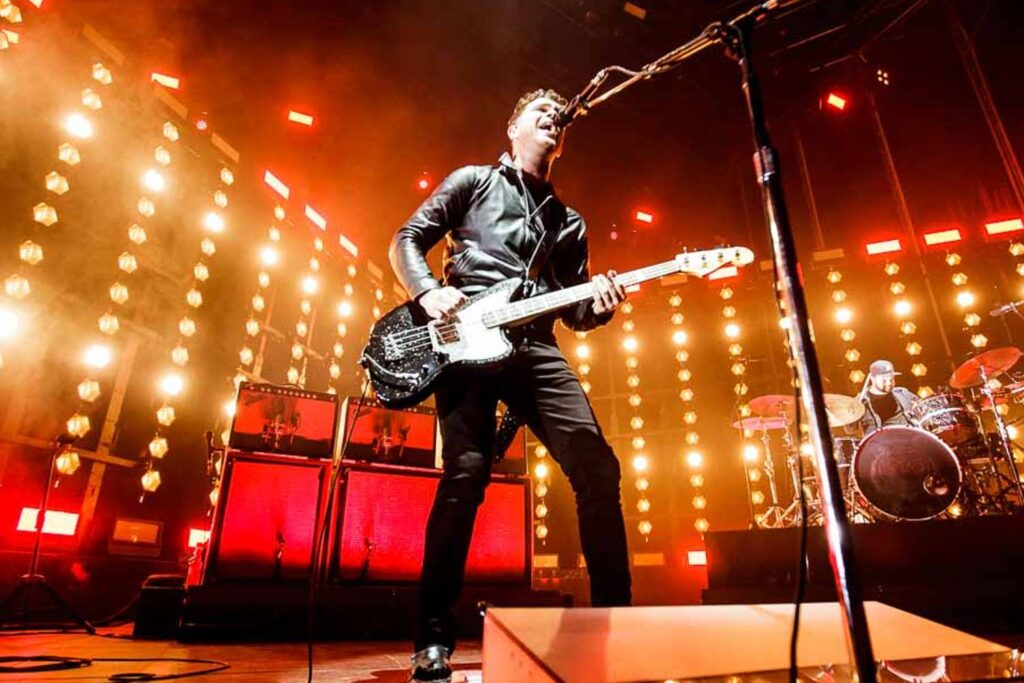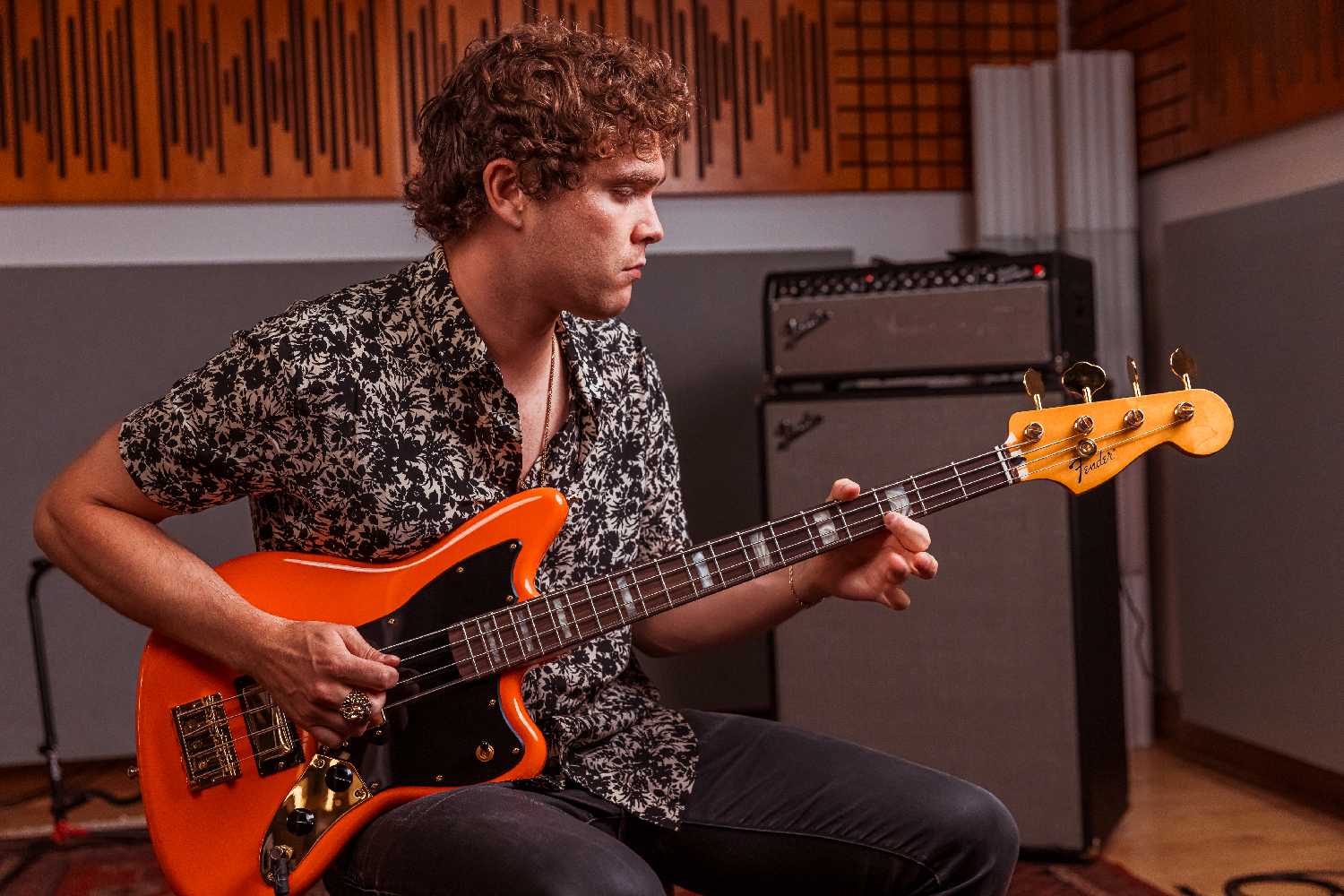Royal Blood have spent the last ten years or so building a profile as a ferocious rock band, a force to be reckoned with.
As a duo, they eclipse bands with many more members, drummer Ben Thatcher’s grooves and bombastic tones match perfectly with bassist Mike Kerr and his unique take on the bass guitar, blending fuzz, octave and more modern tones to help his playing occupy a larger frequency spectrum. His bass of choice? A Fender Jaguar, loaded with wide-range and mini-humbucking pickups for maximum beef, now available in the limited edition Mike Kerr Jaguar bass.

Read all the latest features, columns and more here.
Ahead of their new album, we spoke to Mike Kerr about his new bass, Royal Blood’s new album Back to the Water Below, their writing and recording process and how his unique sonic footprint influences Royal Blood as a band.
Mike, thanks for taking the time! How does it feel to have a Fender signature model with your name on it?
Pretty surreal. Having only really picked up bass as a secondary instrument in my early twenties, it’s as preposterous as being told at that age I would one day have my own signature trombone.
Can you explain your relationship to Fender guitars and basses? Where did it start?
Early into our touring, Fender reached out to help us with amps for the road. By the second album, we collaborated on a custom Jaguar which is now exactly what this signature bass is!
Why the Jaguar Bass for your signature bass? Can you explain a bit about what makes your bass special or different from a regular Jag bass?
I’ve always approached bass from a beginner’s perspective, so to me I was just reaching for what I thought looked cool. [A] short scale Jaguar is where I ended up.
Being much smaller and lighter, it [forces] me to behave more like a guitarist. It is simply just fun to play. The two pickups also offer wildly different tones which becomes extremely useful in a studio setting. The back pickup isn’t for everyone, it’s ‘thin’ and ‘throaty’ but can create pretty unique tones in the wrong hands.
How and why did you choose to be a bass and drum duo in Royal Blood?
The bass sound I had crafted just wasn’t allowing any other members. It didn’t even cross our minds. The music made the choice for us.
How do you address the limitation of being a two-piece? How do you think it’s shaped your music?
As we know, limitation is the essence of creativity. Being in a two piece, I think you have to believe in this concept wholeheartedly and accept the challenge.
It still serves us to this day, despite having added additional sounds on certain tracks, the ‘less is more’ ethos is at this stage a part of our DNA. I think it helps the process of removing what isn’t necessary and leaving behind a ‘Jenga’ tower of riffs.
How do you usually produce and record in the studio? Is it a live band session with overdubs or do you isolate instruments?
We don’t really have a formula for recording or writing, we adapt to serve what the song needs. We’ve done every variety you can imagine.
Thanks for the time! As a closer, we’d love any anecdotes or stories about making Back to the Water Below!
“The Firing Line” was at one stage a double time punk rock song. It didn’t take long to realise we had obliterated a perfectly good song and resorted back to what is essentially the demo with re-recorded drums we did through a tape machine.
Keep up with Royal Blood here.







